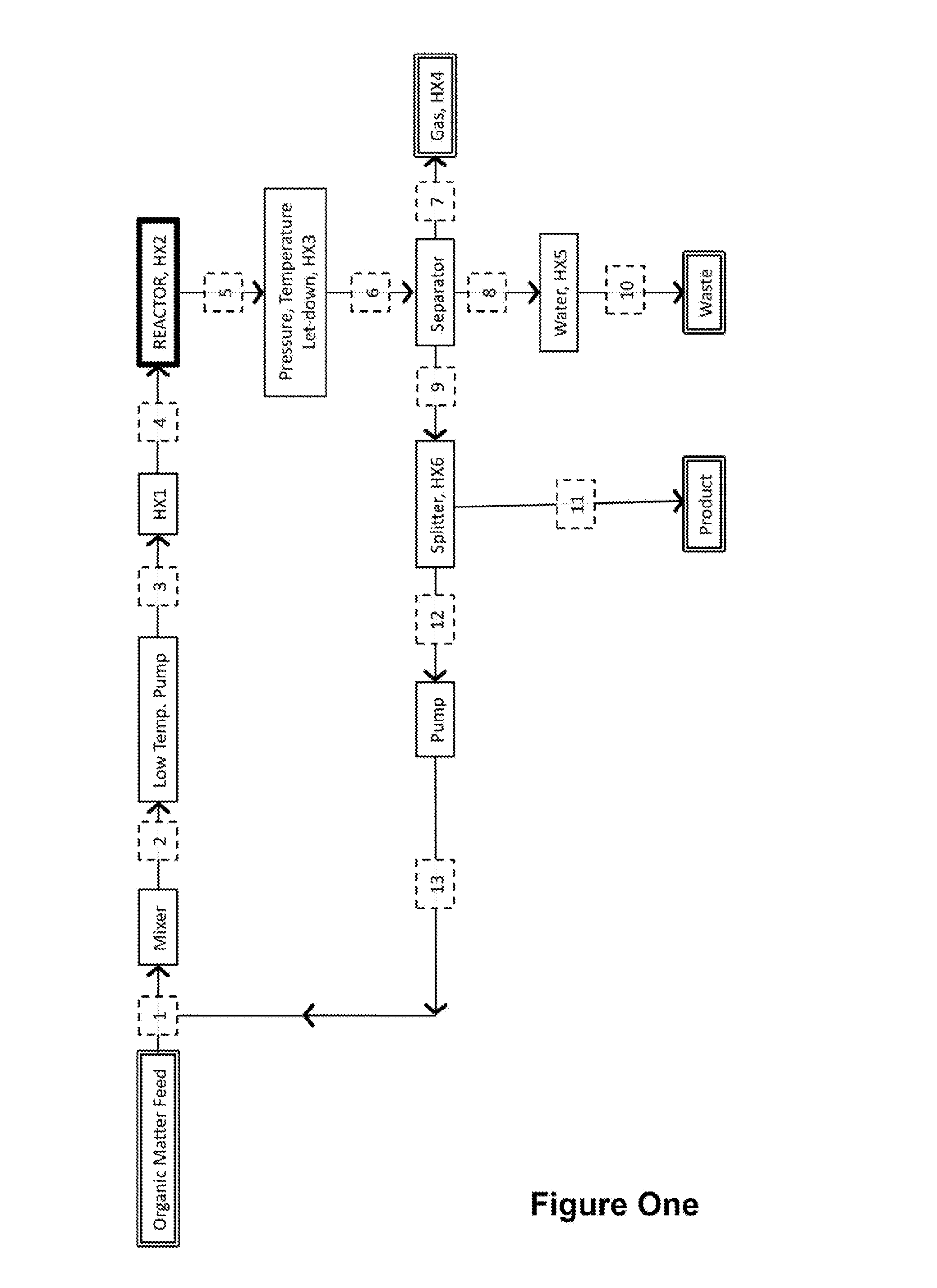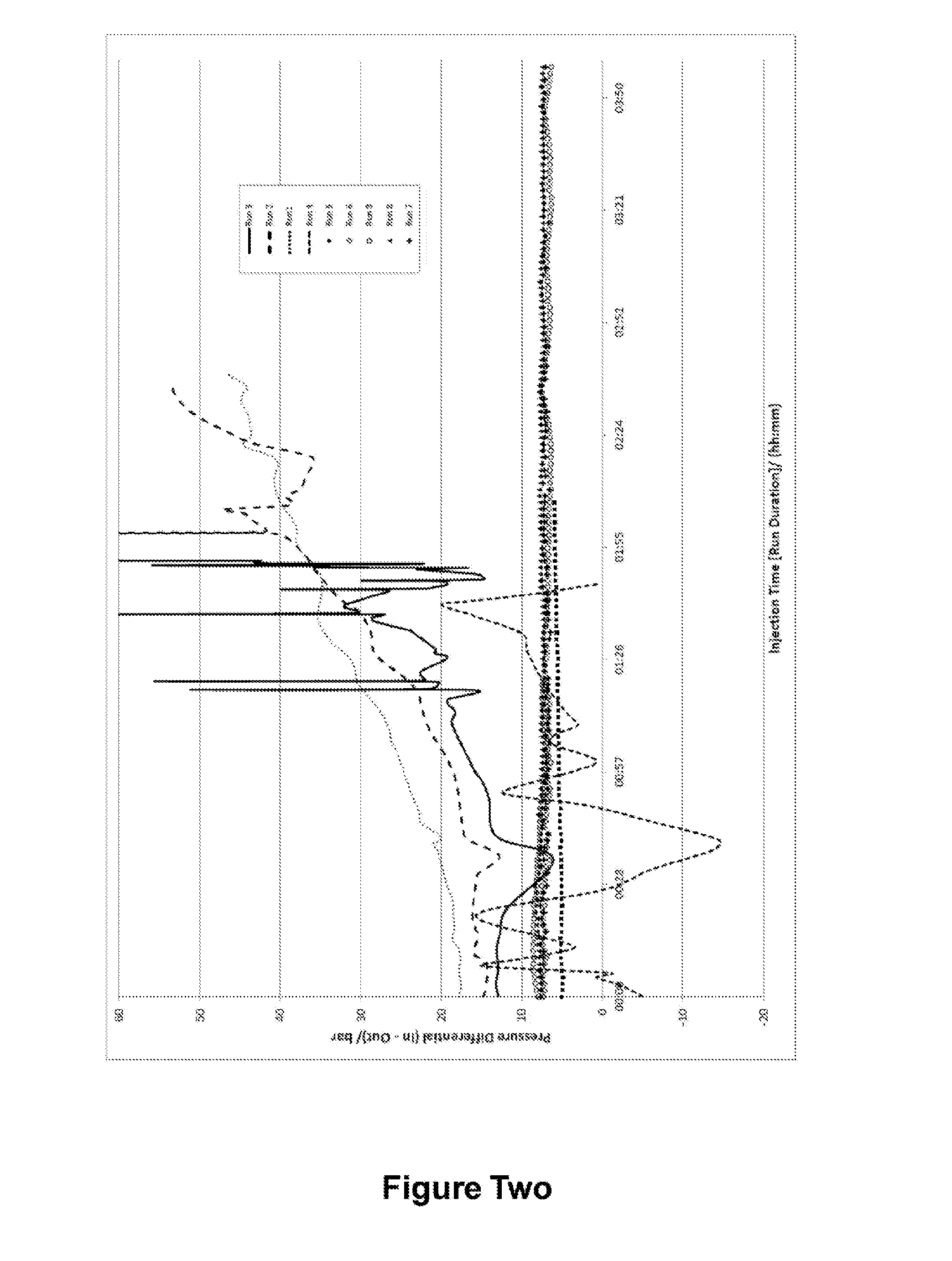Biorefining Method
- Summary
- Abstract
- Description
- Claims
- Application Information
AI Technical Summary
Benefits of technology
Problems solved by technology
Method used
Image
Examples
example 1
Exemplary Conversion of Organic Matter to a Synthetic Crude Oil and Additional Chemical Products in the Presence of a Solid Substrate: Comparison with Conversion in Absence of Solid Substrate
(i) Slurry Preparation
[0335]Pre-ground feedstock (radiata pine biomass containing about 10-20 wt % water) was slurried with water in an agitated slurrying tank both with and without solid substrate. The solid substrate was either lignite (containing about 30-50% water) or activated carbon. For Run 10 the organic matter was bana grass and the solid substrate was a mixture of lignite and iron oxide powder (haematite powder).
[0336]The particle size of the radiata pine organic matter was 0.15 mm-2 mm. The particle size of the solid substrate was <2 mm.
[0337]The mixing proportions of the materials used in the series of experiments are given in Table 2 below.
TABLE 2Examples of Slurry CompositionsOrganicSolidAqueousOilOrganicSolidAqueousOilmattersubstratesolventsolventAddedAdded catalystRunMattersubstr...
example 2
Further Exemplary Conversion of Organic Matter to a Synthetic Crude Oil and Additional Chemical Products in the Presence of a Solid Substrate
(i) Slurry Preparation
[0364]Pre-ground feedstock (radiata pine biomass containing about 10-20 wt % water) was slurried with water in an agitated slurrying tank with solid substrate. The solid substrate was either lignite or activated carbon.
[0365]The mixing proportions of the materials used in the series of experiments are given in Table 7 below.
(ii) Heating and Pressurisation
[0366]Samples were pre-heated and a high-pressure pump was fed by the slurrying tank to deliver the slurry to the main part of the reactor. Heating of the slurry can be performed in several ways, for example, by a counter or co-current heat exchange system and / or by immersion of the heating section in a hot fluidized bed. Alternatively, the slurry can be heated in a ballistic fashion by the intersection of the slurry in the heating section with an oil or water stream (e.g....
PUM
| Property | Measurement | Unit |
|---|---|---|
| Temperature | aaaaa | aaaaa |
| Temperature | aaaaa | aaaaa |
| Temperature | aaaaa | aaaaa |
Abstract
Description
Claims
Application Information
 Login to View More
Login to View More - R&D
- Intellectual Property
- Life Sciences
- Materials
- Tech Scout
- Unparalleled Data Quality
- Higher Quality Content
- 60% Fewer Hallucinations
Browse by: Latest US Patents, China's latest patents, Technical Efficacy Thesaurus, Application Domain, Technology Topic, Popular Technical Reports.
© 2025 PatSnap. All rights reserved.Legal|Privacy policy|Modern Slavery Act Transparency Statement|Sitemap|About US| Contact US: help@patsnap.com



